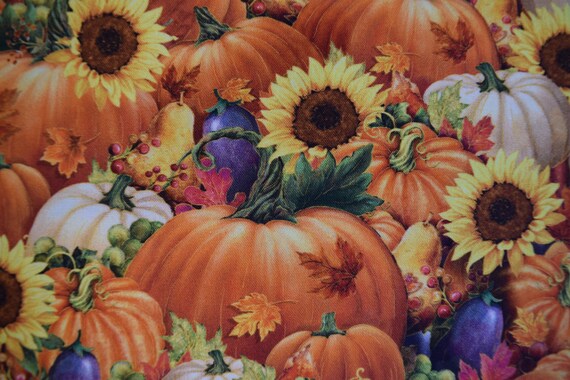To continue our celebration of Thanksgiving, this week’s featured plant is the pumpkin. While famous for its appearance as Halloween decorations and in Thanksgiving recipes, pumpkins have been used across cultures in traditional and modern medicine, but did you know that they are also related to cucumbers and watermelons?
The name ‘pumpkin’, which comes from ‘pompion’ (French for melon), typically refers to specific cultivars of squash, and is one of the 800 species that belong to the Curcurbitae or melon family. While pumpkins we know today are now grown across the world commercially and in backyard compost heaps, their origin as a smaller and more bitter fruit can be traced back to pre-Hispanic Mexico.
Faiths and Cultures:
With archaeological evidence of pumpkins dating back to 7000 BC in Mexico, pumpkins have been an integral part of Aztec, Mayan, and even the Native American culture and diet. Some Native American peoples used to weave mats from pumpkin skin, while the Iroquois made rattles from the dried skin and seeds.
Pumpkins were also a staple for settlers in New England when wheat and corn crops failed to grow. Nowadays, pumpkins are associated primarily with celebrations of Halloween, and ornamental pumpkin varieties are popular for carving jack-o-lantern. This tradition dates back to the arrival of Irish immigrants to America, when they brought over the tradition of carving turnips for Halloween and pumpkins replaced them as they were easier to carve. Pumpkins are also an important fruit in Thanksgiving celebrations, with pumpkin pie considered as a staple dessert.
Medicinal Uses:
Pumpkins have also been used in traditional medicines to treat a range of conditions and diseases, and may even have future applications. In particular, pumpkin seeds have been commonly used to treat intestinal parasites such as worms in traditional Chinese and Mexican medicine, to treat irritable bladders, and even to increase the haemoglobin content in blood!
In traditional Western medicine, pumpkin seeds are one of the four Greater Cold Seeds along with gourd, cucumber, and melon seeds, which were used to create an emulsion to treat fevers, and bowel and urinary passage disorders.
The seeds have been found to be high in protein and good sources of potassium and sodium, while the fruits are high in carotenoids such as alpha and beta-carotene, which are compounds that give pumpkins their bright yellow and orange colour and are responsible for generating vitamin A in the body. Pumpkin seed oil has also been used to treat male baldness, but you should consult a doctor before using pumpkin seeds or oil as a treatment.
Current research suggests that pumpkins may also have antibiotic, antifungal, and anti-diabetic activity and may be used to lower blood sugar in moderately and temporarily diabetic animals. They may also have anti-carcinogenic effects by inhibiting the growth of tumour cells, but further studies are needed to confirm these applications.
Culinary Uses:
Pumpkins have also been used extensively in cooking both sweet and savoury dishes across many cuisines, and everything from the flesh and seeds of the fruit to the leaves and flowers are used. Pumpkin fruits are commonly boiled or pureed and used to make soups and sauces, or roasted and eaten with roasted meat and vegetables.
Pumpkin seeds can be roasted, and are used to make palanquetas, a Mexican dessert that is similar to peanut brittle also made with nuts and dried fruit, or pressed to make pumpkin seed oil, which has a strong flavour that is usually diluted by mixing with other oils and used in salad dressings. The flowers and buds can be fried to make fritters or quesadillas, can be stuffed like zucchini flowers, or chopped and made into a sauce. In Korean cuisine, the leaves of particular varieties are eaten as a vegetable or used to make kimchi.
In England, pumpkins were formally called English Melons and the pulp was used by jam manufacturers to bulk up jams with other fruits without changing the flavour of the jam. Pumpkins can also be cured by being left out in the sun for about a week, which extends their shelf-life so that they can be stored for almost a year!
Want to try something new with pumpkins? Have a look at these great recipes:
Pumpkin Pie, Taste
Turkish Sweet Pumpkin (Kabak Tatlisi), Leite’s Culinaria
Pumpkin Kalwa (Kaddu Ka Kalwa), Whisk Affair
Palanquetas, Mexican Food Memories
Growing Facts:
The pumpkin is a herbaceous, frost-sensitive plant that will flourish in moist, well-drained soil and a sunny position with lots of compost (which helps the soil retain moisture). In warm areas, pumpkins can be planted all year round, but should be planted towards the end of winter in temperate to cold areas.
Pumpkins typically grow as groundcover and they can be used as a great companion plant for sweet corn and beans to help keep down weeds, while growing marjoram with pumpkins can help improve the flavour of the pumpkins. However, pumpkins do not grow well with potatoes and tomatoes, and gardeners should wait two years between planting pumpkins and other members of the melon family to reduce the risk of disease and other growing problems from occurring.
Happy growing, cooking, and Thanksgiving!
